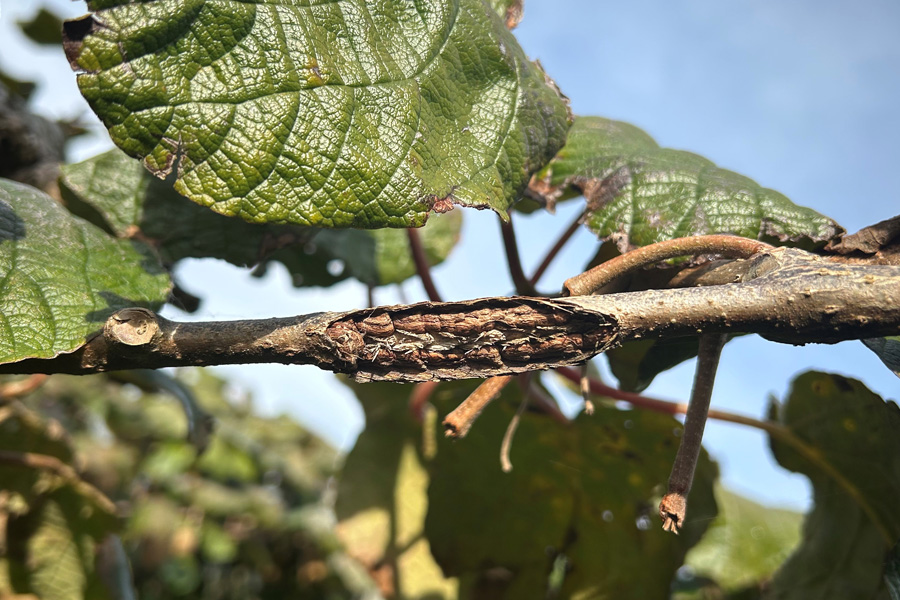In recent years, chorus cicada have become a major problem in kiwifruit growing areas including Kerikeri and the western Bay of Plenty. With the powerful duo of Assail and Engulf help is readily available.
Act early, protect profitability
In recent years, chorus cicada have become a major problem in kiwifruit growing areas including Kerikeri and the western Bay of Plenty. However, in low cicada pressure years, it is easy to overlook the pests’ lurking threat. That inattention can be to growers’ cost. Literally.
And there’s a knock-on effect. In addition to the individual growers’ losses, cicadas have the potential to have a significant impact on the industry’s contribution to local, regional, and even our national economy. Chorus cicada (Amphipsalta zelandica) are endemic to New Zealand – you won’t find them anywhere else. They can be very noisy mid-summer but for much of the time, cicadas are out of sight and, unfortunately, out of mind.
Most damage through cicada egg packs
Cicada eggs hatch between 3 and 10 months of being deposited, usually in early to mid-summer. After hatching, the cicada larvae burrow into the ground. It is at that stage the trouble really begins, says Pieter Van Der Westhuizen Regional Sales Manager Upper North Island for sustainable horticulture provider UPL NZ Ltd.
“For the next 25 to 44 months, the cicada nymphs feed on the roots of the vines. Although that’s not the major threat – unless insect pressure is high.”
The worst is yet to come.
“Chorus cicada adults also feed on kiwifruit vine sap. However, where they can really make a big impact is where the females’ ovipositors cut into the kiwifruit canes to deposit eggs. That will weaken the canes. Then you tend to get the canes breaking during winter tie-down and resulting gaps in the canopy.”
Prevention with Assail insecticide and Engulf adjuvant delivery system
Pieter says, when it comes to cicadas, prevention is much better than cure. “It is pretty much futile to target adult or nymph stages to control this pest.“ Instead, he recommends the combination of Assail® insecticide and Engulf® super penetrant applied after leaf fall but before pruning. “Assail is a very versatile and very efficacious insecticide.”
However, he says, without the wood penetrating properties of Engulf, Assail, or any other bifenthrin product would not be delivered to the cicada egg packs. “And that’s what we’re really after.” As the cicada’s life-cycle means they’re underground for three or four years, populations can build up under the radar. Pieter advises remaining vigilant and checking for the insects while assuming they are always present. “OK, maybe last year wasn’t so bad but this season is likely to be very different.”
Pieter says the Assail and Engulf combination also combats passion vine hopper (Scolypopa australis).
“That’s two destructive pests tackled in one go. Assail gives you the control of the insects and Engulf provides the most efficient delivery system.”
He says Engulf, an adjuvant, does not contain an active but it is an essential and very specific, part of the solution. “Not all adjuvants are created equal. They all have their strengths. Engulf is the ideal partner for Assail. It enables delivery of the insecticide directly to the cicada egg packs by penetrating the covering layer of woody material.”
Assail is a synthetic pyrethroid insecticide/miticide (100 g/L bifenthrin in the form of an emulsifiable concentrate) and has a broad spectrum of activity controlling a wide range of chewing and sucking insects. It kills pests through contact and ingestion however, it is not systemic, so the thorough coverage, provided by Engulf, is absolutely essential for an optimal result.
Pieter adds that Assail should not be applied when bees are actively foraging.
